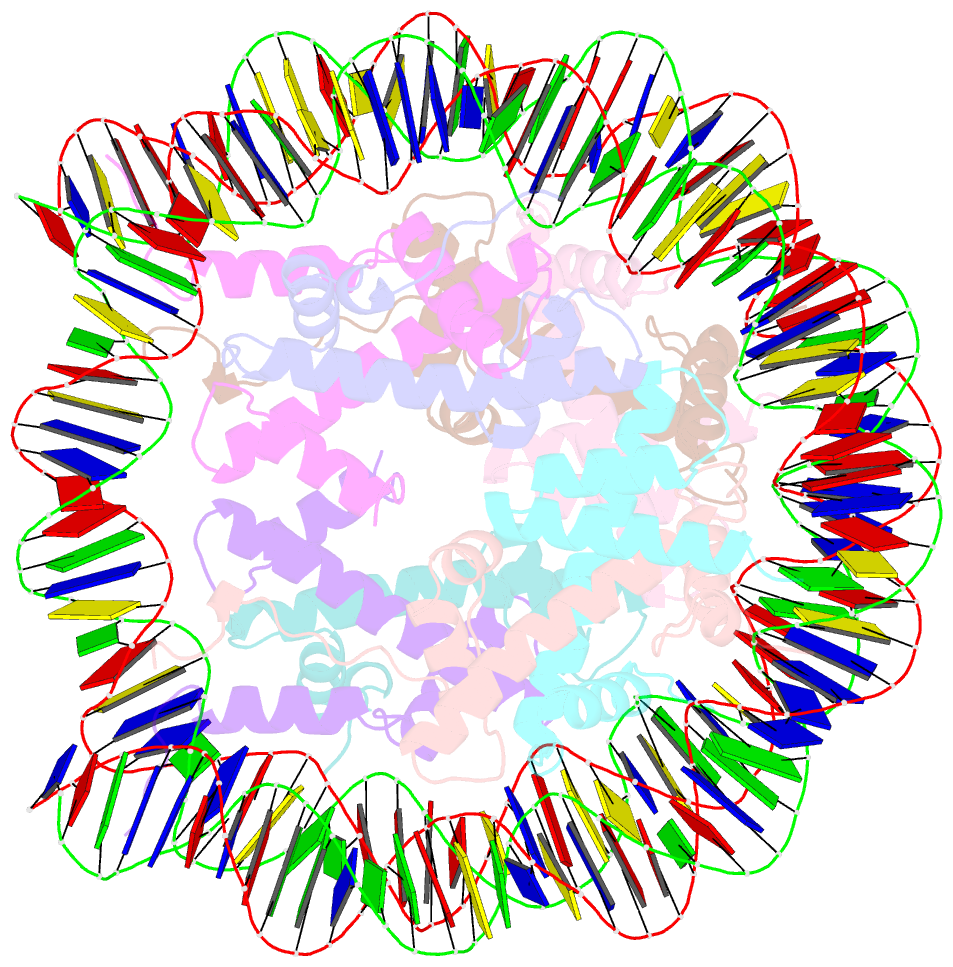Summary information and primary citation
- PDB-id
- 1kx3; SNAP-derived features in text and JSON formats;
DNAproDB
- Class
- structural protein-DNA
- Method
- X-ray (2.0 Å)
- Summary
- X-ray structure of the nucleosome core particle, ncp146, at 2.0 Å resolution
- Reference
- Davey CA, Sargent DF, Luger K, Maeder AW, Richmond TJ (2002): "Solvent Mediated Interactions in the Structure of the Nucleosome Core Particle at 1.9 A Resolution." J.Mol.Biol., 319, 1097-1113. doi: 10.1016/S0022-2836(02)00386-8.
- Abstract
- Solvent binding in the nucleosome core particle containing a 147 base pair, defined-sequence DNA is characterized from the X-ray crystal structure at 1.9 A resolution. A single-base-pair increase in DNA length over that used previously results in substantially improved clarity of the electron density and accuracy for the histone protein and DNA atomic coordinates. The reduced disorder has allowed for the first time extensive modeling of water molecules and ions. Over 3000 water molecules and 18 ions have been identified. Water molecules acting as hydrogen-bond bridges between protein and DNA are approximately equal in number to the direct hydrogen bonds between these components. Bridging water molecules have a dual role in promoting histone-DNA association not only by providing further stability to direct protein-DNA interactions, but also by enabling formation of many additional interactions between more distantly related elements. Water molecules residing in the minor groove play an important role in facilitating insertion of arginine side-chains. Water structure at the interface of the histones and DNA provides a means of accommodating intrinsic DNA conformational variation, thus limiting the sequence dependency of nucleosome positioning while enhancing mobility. Monovalent anions are bound near the N termini of histone alpha-helices that are not occluded by DNA phosphate groups. Their location in proximity to the DNA phosphodiester backbone suggests that they damp the electrostatic interaction between the histone proteins and the DNA. Divalent cations are bound at specific sites in the nucleosome core particle and contribute to histone-histone and histone-DNA interparticle interactions. These interactions may be relevant to nucleosome association in arrays.





